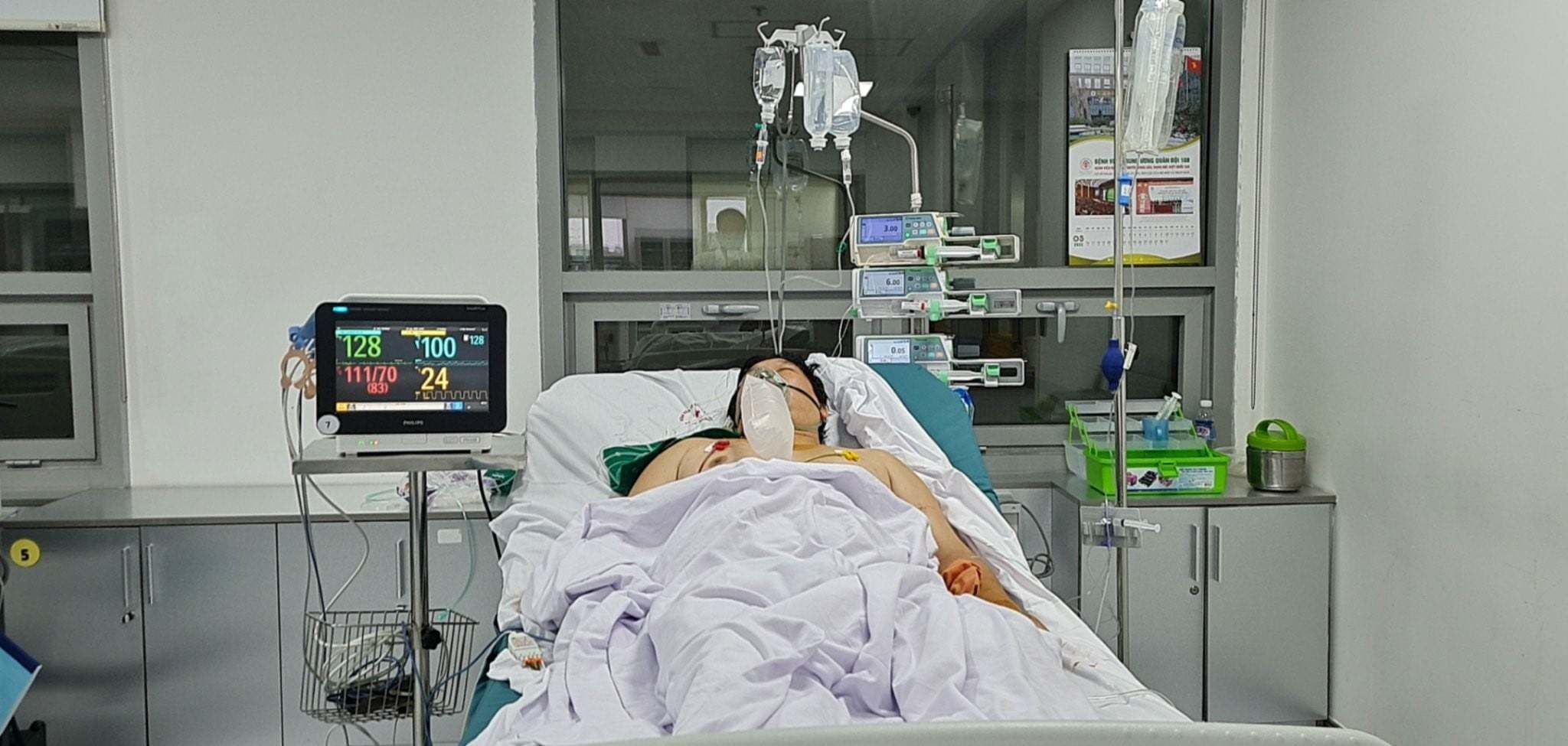Many patients with pulmonary embolism are suspected of being post-Covid-19
Recently, the Department of Cardiovascular Resuscitation, 108 Central Military Hospital continuously receives emergency cases of acute pulmonary embolism with many different conditions.
The culprit causing pulmonary embolism
Ths. Bs. Luu Quang Minh – Department of Cardiovascular Resuscitation – 108 Central Military Hospital said that some patients who were undergoing surgery suddenly stopped heart, some patients were being treated for stroke and had difficulty breathing, low blood pressure, or like an elderly elderly person. This situation also happens when lying down for a long time.
According to Master Minh, pulmonary embolism is the occlusion of at least one pulmonary artery or pulmonary artery branch, usually due to a blood clot (also known as a thrombus) moving up from a vein in the lower extremities. Normally, the mechanism of blood clotting, forming thrombus is protective, helping our body to heal wounds, stop bleeding when bleeding… After completing this role, the body can self-dissolve the thrombus. continuously in the circulatory system.
However, in some elderly patients, having to lie down for a long time, inherited blood clotting disorders, pregnant women, people with cancer or recently patients with Covid … can all increase the risk. coagulation and formation of blood clots move, when the pulmonary artery is blocked, it causes acute respiratory failure, shock due to obstruction of the flow of blood from the right heart to the left heart; The patient dies quickly if not treated promptly.
Besides, smoking, obesity, use of oral contraceptives containing estrogen are also risk factors for pulmonary embolism. Some other substances cause pulmonary embolism such as bone marrow fat after fracture, part of a tumor, air bubbles; however, mainly pulmonary embolism is due to deep vein thrombosis, so the guidelines link pulmonary embolism and deep vein thrombosis together.
Patient DT 43 years old, being treated with a diagnosis of pontine bleeding causing left hemiplegia, 1 week after being discharged from hospital, suddenly had difficulty breathing, chest tightness, blood pressure dropped suddenly, then cardiac arrest.
After urgent assessment, the doctors noticed that the patient’s right heart was abnormally enlarged with very high pulmonary artery pressure, and a CT scan of the pulmonary artery showed a large thrombus in both the pulmonary arteries on both sides. The patient was quickly given emergency treatment and actively resuscitated, successfully intervened to aspirate the pulmonary artery thrombosis, through the critical crisis, the patient returned to an almost previous life.
In the second case, a 92-year-old NTT patient was admitted to the hospital because of a femur fracture, which indicated a hip replacement. During surgery, blood pressure suddenly dropped, heart rate slowed down, doctors quickly thought of pulmonary embolism and confirmed pulmonary artery CT scan.
Patients were given emergency fibrinolytic drugs right on the operating table, combined with intensive cardiovascular resuscitation before, during and after surgery. Her condition after being diagnosed and treated promptly improved every hour. She is now awake and able to function normally on her own.
 |
| Acute pulmonary embolism patient. |
The most special case for the Department of Cardiovascular Resuscitation is the case of a patient with TLN, 98 years old (a very rare case because of the oldest age in the world). The patient has a background of hypertension, type 2 diabetes. After being vaccinated against Covid-19, besides the side effects of fatigue, poor diet. After a few days, the patient suddenly had severe shortness of breath, and her blood pressure dropped to a depth of 60/30 mmHg. The patient was quickly diagnosed with cardiogenic shock due to bilateral pulmonary embolism by the doctors of the Cardiovascular Resuscitation Department and received emergency fibrinolysis.
Dangerous pulmonary embolism
Sharing about pulmonary embolism, Dr. Dang Viet Duc – Vice Chairman of Cardiovascular Resuscitation Department of 108 Central Military Hospital said: “Acute pulmonary embolism is a fairly common disease, the second leading cause of sudden cardiac death. 80% of patients die in the hospital with no identifiable cause when autopsy is determined to be pulmonary embolism.
Risk factors for pulmonary embolism are smoking (40%), history of deep vein thrombosis (37%), prolonged immobility (35%), dyslipidemia (30%), infection severe (25%), stroke (18%), chronic obstructive pulmonary disease – COPD (12%), recent surgery (12%), cancer with 2 cases (6.25%) .
In the Covid-19 pandemic era, it seems we are seeing more cases of pulmonary embolism than previously associated with post-Covid-19 hypercoagulability. However, the ability to diagnose and treat depends on the equipment and experience of each medical facility; When acute pulmonary embolism is severe, the risk of death can be as high as 60%, with the progression usually being very rapid in the first 1 to 2 hours. Therefore, we must always think about it before we can come up with a diagnosis and treatment strategy for the patient.”
It can be said that this disease is not uncommon, but few people know about it. Not only the elderly and weak who lie motionless for a long time or patients with brain stroke, surgery patients but also young people are also at risk of disease. Especially women of childbearing age may be related to pregnancy problems, or patients with pre-existing venous thrombosis of the lower extremities.
The disease has many different manifestations. With severe degree can cause shock, drop in blood pressure, respiratory failure. Mild manifestations appear moderate dyspnea, not causing shock. There are even silent patients who have no symptoms and are chronically undetected for a long time. Therefore, to prevent diseases, people should regularly go for health check-ups to avoid unpredictable consequences.
Khanh Chi
at Blogtuan.info – Source: infonet.vietnamnet.vn – Read the original article here



